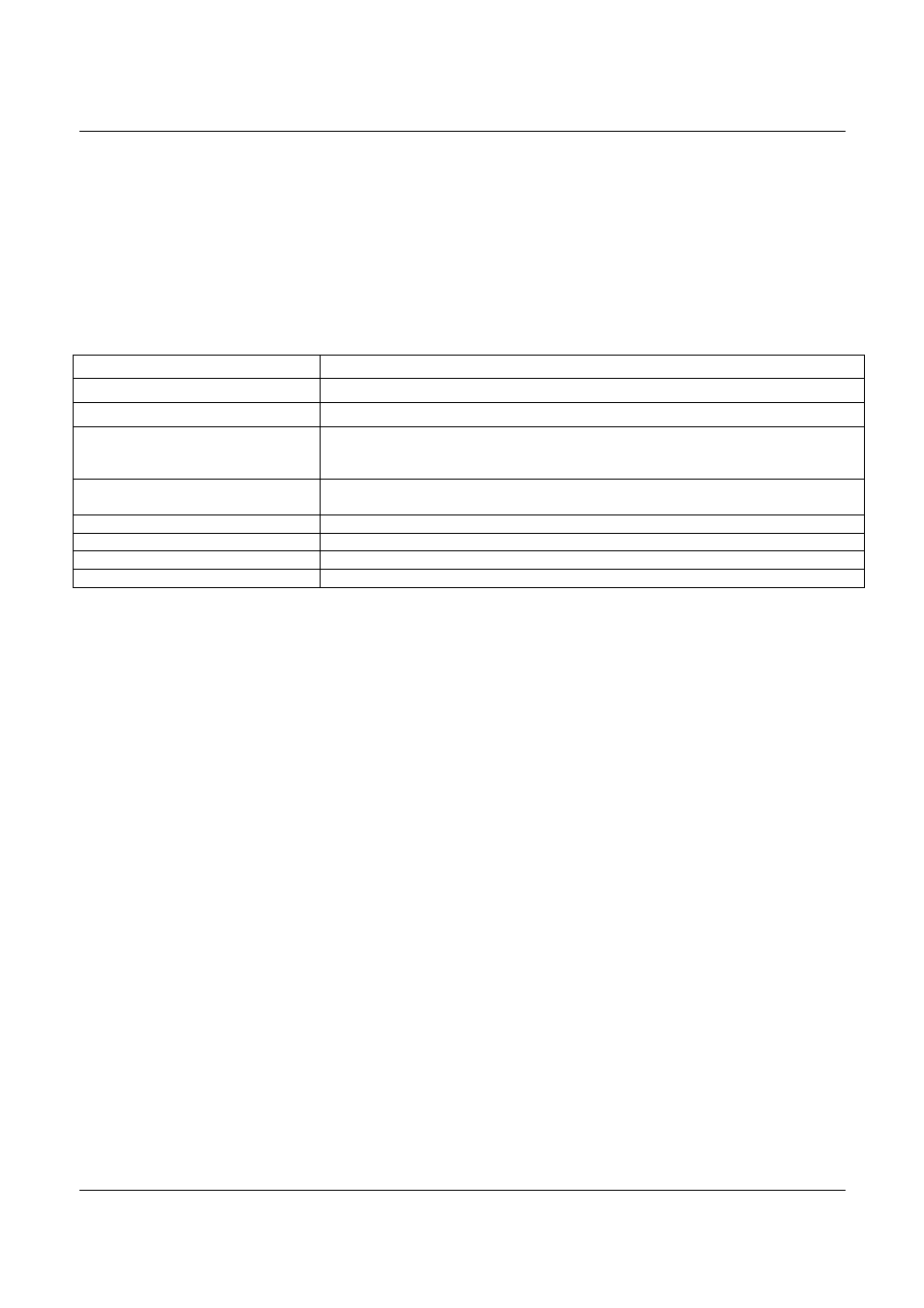AMETEK ReFlex Programming Manual User Manual
Page 74

ReFlex Power™ Programming Manual
DC Module Remote Programming
70
M380056-03 Rev M
‘
module Trigger Buss; these signals are designated ‘a’ through ‘d’. The
ReFlex Power™ Controller has four simplex Front Panel trigger signals,
designated ‘fa’, ‘fb’, ‘fc’, ‘fd’. For all DC Modules, ‘fa’ designates its own Front
Panel trigger in and out pins, which do not need to be configured as an
IN/OUT, they do need to be configured using the TRIG:SLOPe commands.
Table 3-4. SCPI for Module Trigger Routing
SCPI Command
Description
TRIGger
Establish that on module n, trigger t is an input. t = a-d, fa (sets switch open)
TRIGger
Establish that on module n, trigger t is an output. t = a-d, fa (sets switch open)
TRIG
TRIG
n = Module number. The RFP’s GPIO Buss signals (t = a, b, c, or d) connected
to ‘fa’, the Modules Front Panel trigger, specifying direction. The trigger signal
is passed through the Module. (switch closed)
TRIG:INP
TRIG:OUTP
Map RFPC’s GPIO Buss signals (t = a, b, c, or d) to Front Panel triggers
(t = fa, fb, fc ,fd), specifying direction. (switch closed)
TRIG
Displays the module’s usage of the GPIO Buss signals.
TRIG:DISPlay?
Displays a list of the module numbers that use the GPIO Buss signals.
TRIG
1
RFPC (t = fa, fb, fc ,fd), trigger enable
TRIG
1
RFPC (t = fa, fb, fc ,fd), trigger disable
Note: At this time the ReFlex Power™ Controller only implements direct trigger mapping ‘a’ to
‘fa’, ‘b’ to ‘fb’…
1
Allow a signal to pass/not pass through the trigger channel specified. (Output enabled).
T
RIGGER
S
IGNALS
Trigger signals can be any one of three types:
•
Positive leading edge assertion
•
Negative leading edge assertion
•
Dual edge
Each of these has specific point(s) at which triggering occurs. All three trigger
types can be input or output, and are established by SCPI commands. The
positive edge trigger assertion is used for the example figures herein though
any of the allowed trigger types can be used.
The positive and negative edge triggers should be familiar but the dual edge
trigger may not be as obvious. The trigger input is not analog, it is digital and
follows the levels that are listed within this section. If the quiescent state is
low then the trigger occurs when the signal transitions to the high state. This
is shown as a slow ramp up of the trigger signal, (in fact the ramp time is
typically very rapid). When the trigger signal passes through about 3.2 V the
trigger is asserted. The next trigger occurs when the signal transits back
